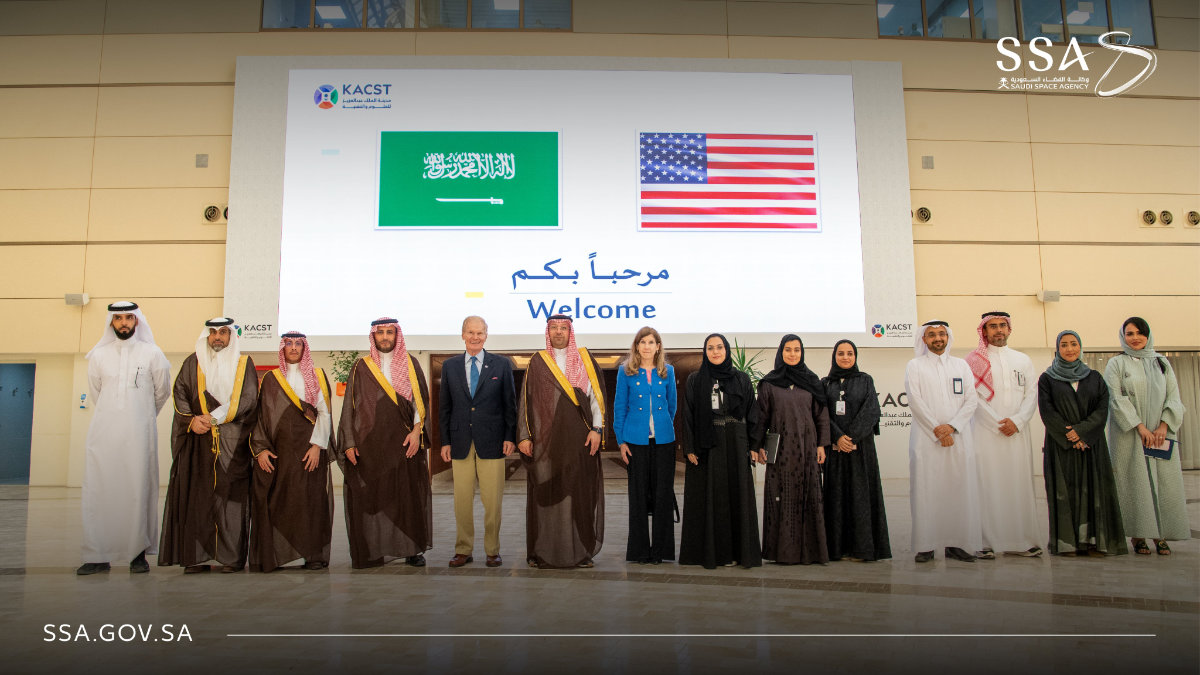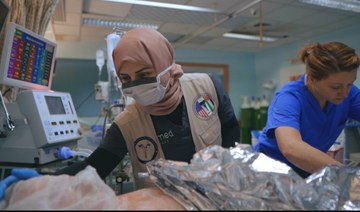NEW YORK: A 37-year-old man was arrested on Wednesday night after walking into St. Patrick’s Cathedral in New York City with two full gasoline cans, lighter fluid and lighters, police said.
When the man entered the Midtown Manhattan church he was confronted by a cathedral security officer, a New York City Police Department (NYPD) spokesman said.
The man then left the cathedral and was apprehended by police, John Miller, deputy commissioner of intelligence and counterterrorism for the NYPD, told a press briefing.
The official noted the incident came two days after the much-publicized fire in Paris’ Notre Dame Cathedral.
"This is an indicator of something that would be very suspicious," Miller told reporters outside the cathedral.
Three predominantly black churches in Louisiana were burned down between March 26 and April 4.
The man told police he was carrying the gas cans because his vehicle had run out of fuel. When police checked the vehicle they found it was not out of gasoline, at which point the man was arrested, Miller said.
The man is "known to police," he added.
Police are still trying to ascertain the man's "mindset" and motives, Miller said.
Man caught walking into New York cathedral with gas cans, lighters
Man caught walking into New York cathedral with gas cans, lighters

- The man told police he was carrying the gas cans because his vehicle had run out of fuel
- Police are still trying to ascertain the man's "mindset" and motive
What We Are Reading Today: ‘Bartleby and Me’

Writers love to write about writing and none seemingly more so than Gay Talese, the journalist known as a pioneer of the American literary moment called “New Journalism.” This style of writing originated in the 1960s and ‘70s and combines journalistic research with creative non-fiction.
Talese started his career as an obituary writer at the New York Times and, later, as a magazine writer who ended up reluctantly penning the most widely read magazine articles of all time. He showcases some of that editorial wisdom — and reporting mishaps — in his 2023 book, “Bartley and Me: Reflections of an Old Scrivener.”
Now 92 years old, he writes vividly about his early reporting days and the stories behind the stories; he masterfully weaves in stray strands that somehow come together into a coherent narrative. Talese writes crisp copy. He writes about nobodies and somebodies with equal fervor.
He recalls his time as a young reporter on assignment where, at the insistence of his persistent editor, he attempted to sit down for an interview with the elusive and super-famous star Frank Sinatra. Talese recounts how he repeatedly tried — and failed — to pin down “Ol’ Blue Eyes” while chasing him around California in the 1960s. He eventually published his distinctively titled profile, “Frank Sinatra Has a Cold,” in the April 1966 issue of Esquire. That piece of writing is considered one of the most celebrated pieces of magazine journalism to date.
Talese’s tales are mostly centered around his time in New York. He recalls things in meticulous detail — for example, pointing out the exact address and precise building within a neighborhood to help the reader visualize the space. The city is always a leading part of the story.
“New York is a city of things unnoticed,” he wrote 60 years ago, something that could easily be written today. He recalls the early days of his journalistic career in New York, churning out newspaper copy and still, now, being ever-so-curious about everything. The pages of this book show that we all, alongside him, still have much more to notice.
The title of the book was inspired by American author Herman Melville’s short story, “Bartleby, the Scrivener: A Story of Wall Street,” published in the 1800s. This is a social criticism piece about a lawyer who hires a peculiar scrivener or clerk, Bartleby, and the adventures (or misadventures) that ensue.
In his version, Talese shares with us a fresh piece of original reporting titled “Dr. Bartha’s Brownstone,” which is his version of “Bartleby.” This time, however, Bartleby is an unknown doctor who makes his bombastic mark on the city one random summer day. It is a brilliant piece of journalism about journalism.
Saudi minister and US counterpart agree road map for cooperation in energy sector

- During meeting in Riyadh, Prince Abdulaziz bin Salman and Jennifer Granholm discuss ways to enhance energy-related collaborations
- They also review Kingdom’s efforts to tackle climate change through local and regional initiatives, including the Saudi and the Middle East green initiatives
RIYADH: The Saudi minister of energy, Prince Abdulaziz bin Salman, and the US secretary of energy, Jennifer Granholm, on Wednesday agreed a road map for cooperation between the countries in the sector.
During a meeting in Riyadh, they also discussed ways in which collaborations might be enhanced in energy-related fields such as carbon management, clean hydrogen, nuclear energy, electricity and renewables, innovation, energy-sector supply chain resilience, and energy efficiency. The two countries signed a Partnership Framework for Advancing Clean Energy in July, 2022.
The officials also reviewed the Kingdom’s efforts to tackle climate change through local and regional initiatives based on a circular carbon economy, including the Saudi and the Middle East green initiatives, the ministry said.
The new road map represents a joint plan for energy cooperation that establishes a timeline and outlines critical projects for collaboration, officials said.
Both sides agreed to engage in various activities to implement the road map, including: exchanges of knowledge on policies related to the joint plans, such as standards and regulatory frameworks; enhancement of joint research and development, especially in the field of new technologies; and the building of human capital through training and exchanges of expertise.
Saudi Center for Space Futures will support lunar mission and $2 trillion global space economy, NASA chief tells Asharq TV

- New center will bring space industries together with government programs, says Bill Nelson on Riyadh visit
- NASA plans to “go back to the moon” with commercial and international partners, agency chief tells Maya Hojeij
RIYADH: The Center for Space Futures, hosted by the Saudi Space Agency, will bring together space industries to send a mission to the moon and build a $2 trillion global space economy by 2035, NASA Administrator Bill Nelson has said.
During a visit to Riyadh this week, the US space agency chief said in a special interview with the Asharq TV channel: “The future of the space center is to bring together space industries, commercial companies, together with the government programs.”
On April 29, the Saudi Space Agency and the World Economic Forum signed an agreement to establish a Centre for the Fourth Industrial Revolution focused on space.

Set to open in the fall of 2024, the Center for Space Futures will be the first center in the C4IR network. It aims to facilitate public-private discussions on space collaboration and contribute to accelerating space technologies.
Nelson told business anchor Maya Hojeij that, after a hiatus of half a century, NASA plans to “go back to the moon.” However, he added: “This time with not only commercial partners, but also with international partners.”
He highlighted that the Center for Space Futures will “bring together those commercial and government programs in order to build a significant space economy.”
Earlier this year, NASA announced that its Artemis II lunar mission will aim to land the first astronauts near the moon’s South Pole in September 2025.

NASA’s administrator added: “We’re talking about a space economy that will be almost $2 trillion dollars by the year 2035 — only a little over a decade away — a significant part of the economic sector of a country.”
Elaborating, he said that the “$2 trillion is worldwide. And that is a lot of startup companies, such as I have seen here in Riyadh today, that are partnering with other companies from around the world that are including incentives by the Saudi government.
“So, we do that in America, and that’s where I mentioned that we’re going back to the moon, this time after a half century, because we were on the moon a half-century ago.
“This time, we’re going back to the moon for a different reason, we’re going to learn, to invent, to create in order to be able to go to Mars and beyond. And this time we go back with commercial enterprises.”
NASA’s Apollo 17, which celebrated its 50th anniversary in December 2022, was the space agency’s sixth and final mission to land people on the moon.
The mission landed on the Taurus-Littrow site, which offered a mix of mountainous highlands and valley lowlands, allowing the crew to collect 741 lunar samples.
Nelson told Asharq’s Hojeij that NASA has partnered with Saudi Arabia on multiple scientific instruments to send Artemis II to the moon for economic benefits and to better understand climate change.

“We have a partnership with Saudi Arabia,” he said. “We’ve already partnered on a number of scientific instruments, but we’ve got a whole way to go.
“We’re going back to the moon and then we’re going to Mars. We are constantly looking down on Earth to help our climate, to better understand what is happening to the Earth, to give very precise measurements of exactly what’s happening there.
“We’re going to coordinate and partner with Saudi Arabia on all of these things.”
Asked about space challenges and how the partnership between Riyadh and Washington sought to address them, Nelson said that debris in space was among the biggest threats to satellites and spacecraft.
“Debris in space is a major problem,” he said. “We are too often having to move our International Space Station to get it out of the way of a piece of space junk that otherwise could hit it.
“Same thing with a lot of our satellites. And so that applies to everybody’s satellites, not just US satellites, Saudi satellites.”
Nelson added that NASA was working with partners “to come up with systems and mechanisms by which we can require the manufacturers of satellites to be able, after their useful life, have a precise landing back through the Earth’s atmosphere to burn up and if any pieces are left over, that they would fall harmlessly in the southern Pacific Ocean.”
Underscoring the importance of these efforts, he said that “whenever something is left in space, it becomes a dangerous projectile that could always ram into something, like our space station.”
The UNU Institute for Environment and Human Security, in its Interconnected Disaster Risks 2023 report, included space debris among its six risk tipping points.
The report, released in February, found that there were 35,150 tracked objects in orbit in 2023. Just 25 percent of these were working satellites while the rest were considered junk, including broken satellites and rocket parts.
As objects in space travel at speeds exceeding 25,000 km per hour, any collision may be “catastrophic,” and even the smallest objects can cause significant damage, according to the same UNU-EHS report.
Asked about the Artemis Accords, which Saudi Arabia signed in 2022, the NASA administrator described it as “a common sense set of principles of the peaceful uses of space.
“For example, in the Artemis Accords, we have that you would come to the aid and assistance of a nation that would have a problem in space,” he said.
“We would develop common elements so that you could help each other out, perhaps remotely in space. But, basically, the thrust of it is the peaceful use of space.”
Saudi Arabia is the 21st country globally and the fourth Middle Eastern nation to sign the Artemis Accords, which set out common principles, guidelines and best practices to ensure safe, peaceful and sustainable space exploration.
Nelson’s visit to the Kingdom is intended to explore future collaboration between the US space agency and key government officials, while also emphasizing the significance of civil space cooperation in the broader US-Saudi relationship.
The Saudi Space Agency was launched by royal decree in December 2018 to accelerate economic diversification, enhance research and development, and raise private-sector participation in the global space industry.
Since its launch, the Kingdom’s state-funded space program has struck deals with several of the world’s established space agencies, astronautical companies and top universities to benefit from advanced technological cooperation.
Saudi Arabia’s space industry holds great potential for growth after recording $400 million in revenue in 2022, according to a report by the Saudi Communications, Space and Technology Commission published late last year.
The global space economy is projected to expand to $1.8 trillion by 2035, marking a threefold increase from $630 billion in 2023, according to research published by the World Economic Forum in April.
A growing number of businesses across sectors including agriculture, construction, insurance and climate-change mitigation, are expected to drive the new and expanding space economy.
This rapid surge is being driven by reduced costs and broader accessibility to space-enabled technologies, encompassing various commercial sectors such as communications, positioning, navigation, timing, Earth observation services, tourism and manufacturing.
While state-sponsored investments will remain the cornerstone of the industry, enhanced collaboration between various stakeholders across public and private sectors will be increasingly important to fully realize the sector’s potential in the future.

Palestinians: Our ‘Nakba’ in 2023 is worst ever

- Thousands protest in West Bank, waving Palestinian flags, wearing keffiyeh scarves and holding up symbolic keys as reminders of long-lost family homes
GAZA: As the Gaza war raged on, Palestinians on Wednesday marked the anniversary of the Nakba, or “catastrophe,” of mass displacement during the creation of the state of Israel 76 years ago.
Thousands marched in cities across the Israeli-occupied West Bank, waving Palestinian flags, wearing keffiyeh scarves and holding up symbolic keys as reminders of long-lost family homes.
Inside the besieged Gaza Strip, where the Israel-Hamas war has ground on for more than seven months, scores more died in the fighting sparked by the Hamas attack of Oct. 7.
“Our ‘Nakba’ in 2023 is the worst ever,” said one displaced Gaza man, Mohammed Al-Farra, whose family fled their home in Khan Younis for the coastal area of Al-Mawasi.
“It is much harder than the Nakba of 1948.”
Palestinians everywhere have long mourned the events of that year when, during the war that led to the establishment of Israel, around 760,000 Palestinians fled or were driven from their homes.
But 42-year-old Farra, whose family was then displaced from Jaffa near Tel Aviv, said the current war is even harder.
“When your child is accustomed to all the comforts and luxuries, and suddenly, overnight, everything is taken away from him ... it is a big shock.”
Thousands marched in the West Bank city of Ramallah, as well as in Nablus, Hebron and elsewhere, carrying banners denouncing the occupation and protesting the war in Gaza.
“There’s pain for us, but of course more pain for Gazans,” said one protester, Manal Sarhan, 53, who has relatives in Israeli jails that have not been heard from since Oct. 7. “We’re living the Nakba a second time.”
Commemorations and marches — held a day after Israel’s Independence Day — come as the Gaza war has brought a massive death toll and the forced displaced of most of the territory’s 2.4 million people.
A devastating humanitarian crisis has plagued the territory, with the UN warning of looming famine in the north.
India says it is working to repatriate UN staffer killed in Gaza

- Waibhav Anil Kale, who was working with the UN Department of Safety and Security, and was killed while heading to the European Hospital in Rafah along with a colleague, who was wounded in the incident
NEW DELHI: India said on Wednesday it was working to repatriate the body of a former Indian Army officer serving as a UN staffer, who was killed in Gaza when his vehicle was hit by what the UN said was tank fire in Rafah where only Israeli tanks are present.
The staffer, Waibhav Anil Kale, was working with the UN Department of Safety and Security and was heading to the European Hospital in Rafah along with a colleague, who was wounded in the incident. The UN said he was the first international UN staffer killed in Gaza since the war began on Oct. 7, taking the total UN death toll to 191.
UN Secretary General’s deputy spokesperson Farhan Haq said on Tuesday the UN had set up a fact-finding panel to determine the responsibility for Kale’s death.
“It’s very early in the investigation, and details of the incident are still being verified with the Israeli Defense Force,” he told a press cconference. Asked by reporters about the shots fired on the vehicle, he said, “we believe it came from a tank in the area” and later added, it was “safe” to assume that only the IDF tanks in that region. There are 71 international UN staff members in Gaza currently, he said. The IDF said in a statement on Monday that the incident was “under review” and the IDF had not been made aware of the vehicle’s route. But an initial inquiry indicated that “the vehicle was hit in an area declared an active combat zone.”
The Hamas-run government’s media office accused Israel of “deliberately targeting foreign staff in the Gaza Strip.”
India’s Foreign Ministry said its diplomatic missions were “in touch with relevant authorities” on the investigation into Kale’s death, and helping to bring home his body.
In a statement on Monday after Kale’s death, UN Secretary General Antonio Guterres reiterated an “urgent appeal for an immediate humanitarian ceasefire and for the release of all hostages,” saying the conflict in Gaza was continuing to take a heavy toll “not only on civilians, but also on humanitarian workers.” He has demanded explanations for all their deaths.

















